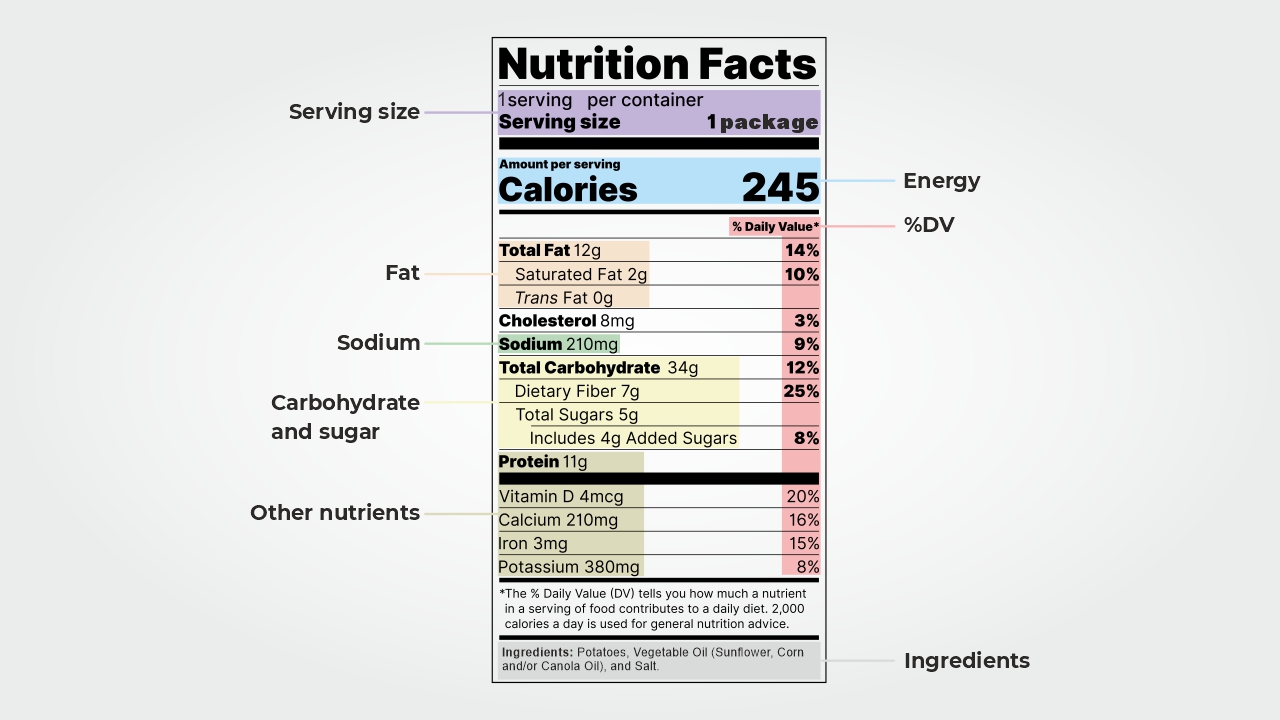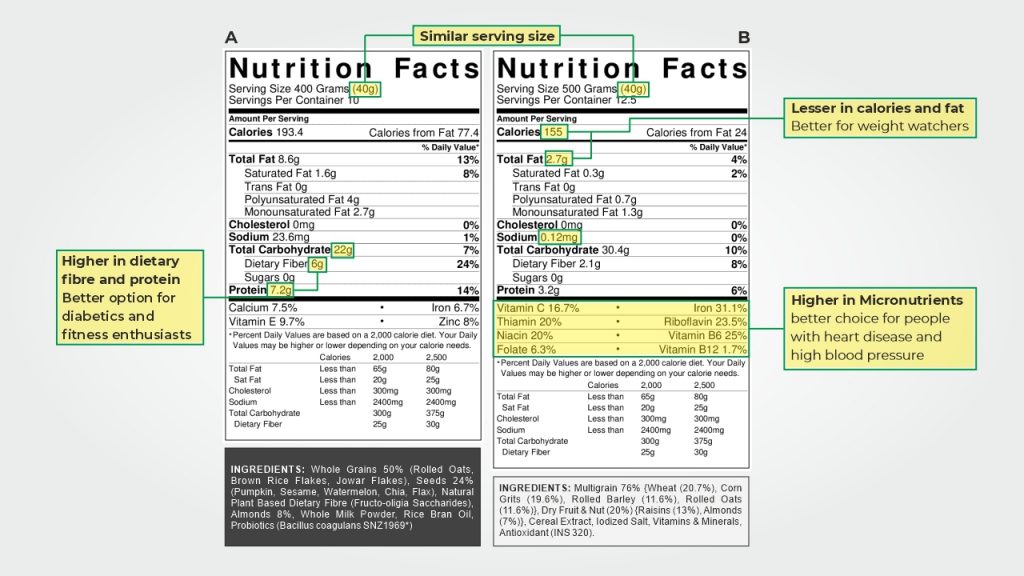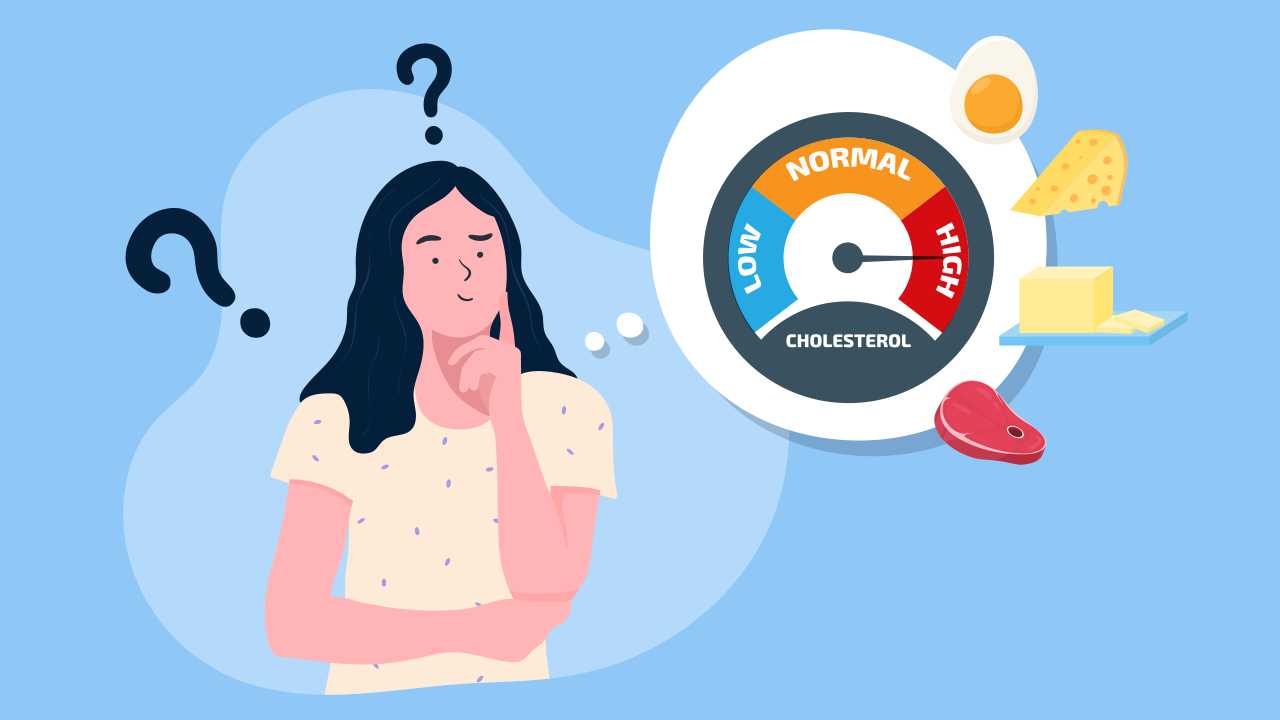
Decoding Nutrition Labels: How You Can Choose to Eat Healthy

When you buy anything, you probably compare prices between different brands before making a choice. But do you compare nutrition labels of food items to choose the healthier product? Learning how to read nutrition labels may help you zero in on more nutritious and energy-balanced foods, and avoid those that might be tasty but harmful for your body.
Let us decode a sample nutrition label.
Serving size
Labels generally mention the nutrient values of one serving. The serving size is mentioned on the label as well. When you are reading the nutrition label, think of how many of those servings you might consume.
For example, while soft drink brands may provide nutrient values for a serving size of 100ml or half-a-glass, we actually drink a lot more. In fact, most people consume 200ml or a full glass at a time. So, you would be consuming way more than one serving size.
Percent daily value (%DV)
The %DV of a food product is based on a 2,000 calorie diet for adults. It refers to how much of your daily requirement of a nutrient can be met by one serving. If the %DV of a nutrient is
- 5% or less – it’s a poor source of that nutrient
- between 10% to 20% – it’s a good source
- more than 20% – it is a rich source
You may want to select foods that are poor sources of saturated fats, trans fat, cholesterol, and sodium, and rich sources of vitamins, minerals, and fiber. This is primarily because the former are better consumed in moderation.
Ingredients
Ingredients are generally listed in the decreasing order of the weight in which they are present in the food product. So, if the first few ingredients of a packaged food are high in fat like butter or cream, then it is a high-fat food. For people with food allergies, this list may prevent accidental consumption of an allergen. Moreover, this list may also tell you how many artificial food additives and preservatives have been added to the packaged food. You would usually find them at the end of the ingredients list, described by their function and followed by a number code in brackets, like preservative (211) or acidity regulator (330). Remember, in the case of these artificial ingredients, the lesser the better.
Also watch: How to read a nutrition label?
Nutrients breakdown
Energy
Expressed in kilocalories (kcal), or simply calories, the first row on the nutrition label usually displays the energy content per serving of the food. All macronutrients are sources of energy, but fat has the highest number of calories per gram. So, while one gram of carbohydrates and protein provide you 4Kcal each, fat provides you 9Kcal for the same amount.
Also read: Macronutrients: What are they? Why do you need them?
Try to opt for foods with low energy-density (fewer calories per gram of food), since you may have satisfying portions of these foods without increasing your total calorie intake.
For example, while one scoop (100g) of strawberry ice-cream gives you 207Kcal, you may have to eat nearly triple the amount (280g) of strawberry yogurt to get the same amount of calories. So, opting for flavored yogurt over an ice-cream would fill your tummy, while providing the same overall number of calories.
Fat
Information on fat content is usually listed as total, saturated and trans fats, though some brands may also provide values for cholesterol, monounsaturated (MUFA) and polyunsaturated (PUFA) fats. Saturated and trans fats are known as “bad” fats as they contribute to increased cholesterol in your blood. Saturated fats must not contribute to more than 10% of your daily calories. Trans fats should be avoided completely. MUFA and PUFA, on the other hand, are known as “good” fats as they lower cholesterol and reduce the risk of developing heart diseases. Choose the ones, which have less than 3g fat per 100g of the product, if you are looking to lose weight.
Also read: Dietary Fats: How to Choose Right and Eat Smart
Carbohydrates and sugars
Carbohydrates or carbs are represented as total carbs, total sugars, added sugars, and dietary fiber. Total sugars of a product include naturally occurring sugars, such as lactose in milk and fructose in fruits, plus any sugars (sucrose, corn syrup, fructose syrup) added during the processing of foods. You may want to watch out for “added sugar” or anything ending with ‘ose’ on the label, as these may be an indication that the food includes additional sugar.
Salt
Sodium finds its way into processed foods through preservatives and monosodium glutamate. Avoid foods with more than 1.5g of salt per 100 g (or 0.6g sodium). If you have high blood pressure, or a heart, or kidney disease, opt for the ones with less than 0.3g of salt per 100g (or 0.1g sodium).
Other nutrients
Vitamins, proteins and minerals, like calcium and iron, are essential nutrients that support body functions. The more they are in your processed food, the better it is for you. So choose foods, which meet 20% or more %DV of these nutrients.
Let’s compare
Let’s compare nutrition labels for two popular brands of Muesli, which claim to have “0% added sugar”, and see which one checks the health meter.

First, we look at the list of ingredients to verify the nutrient claim of “0% added sugar”. Though neither of the brands has “sugar” mentioned in their ingredients list, brand B contains added sugar disguised as “cereal extract”. So, only brand A lives up to its nutrient claim.
Next, we look at the serving size, which is 40g for both. Brand B has fewer calories, so it may be a good option for weight watchers. Coming to the fat content, Brand A has higher amounts of total and saturated fats and sodium. This means that brand B, which has lesser fat and sodium and higher amounts of micronutrients, is a better choice for people with heart disease and high blood pressure. Brand B has more total carbohydrates due to added sugars, but much less dietary fiber and protein than Brand A. This makes brand A a better option for diabetics and fitness enthusiasts.
As you see, reading nutrition labels doesn’t require any extraordinary effort, but can go a long way to help you make better food choices. Make an informed decision and eat your way to good health.
References
1. Nutritional labeling. In: Dudeja P, Gupta RK, Minhas AS, eds. Food Safety in the 21st Century. London, UK: Academic Press, 2017: 481–9.
2. Mayhew AJ, Lock K, Kelishadi R, et al. Nutrition labelling, marketing techniques, nutrition claims and health claims on chip and biscuit packages from sixteen countries. Public Health Nutr 2016; 19: 998–1007.
3. US FDA. Guidance for Industry: A Food Labeling Guide. Food and Drug Administration. https://www.fda.gov/regulatory-information/search-fda-guidance-documents/guidance-industry-food-labeling-guide (accessed Feb 27, 2021).
4. US FDA. How to Understand and Use the Nutrition Facts Label. Food and Drug Administration. https://www.fda.gov/food/new-nutrition-facts-label/how-understand-and-use-nutrition-facts-label (accessed Feb 27, 2021).














